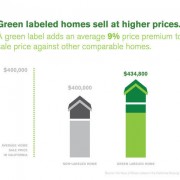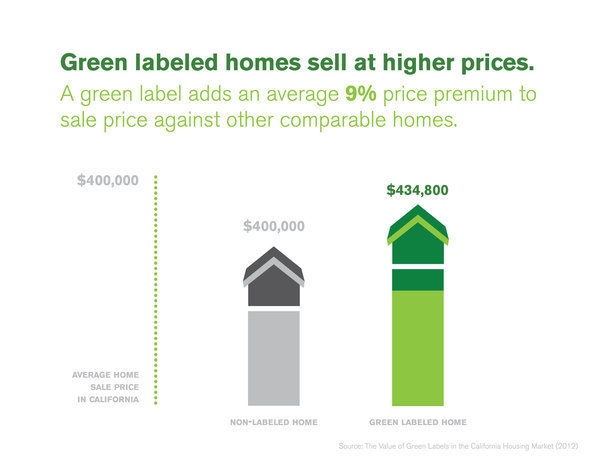The South West Michigan Regional Information Center (SWMRIC), who represents many of the regions Realtor associations “is addressing the “green features” in a residential property by adding a new “Green Features Section” to the Residential Data Input Form. This new section is divided into two parts: Green Features and Green Certification/Rating.” * To see the full list of all Green Features and Listed certifications please go to the SWMRIC link and scroll to page 4. http://www.swmrichelp.com/RESIdatainput.pdf
advocates for and helps Midwestern Realtor Associations find ways to incorporate green features and certification in their listings for appropriate valuation of Green Homes. These Green MLS upgrades are key in driving demand for affordable, healthy, durable and efficient home construction, remodeling and purchasing.
Currently we see many problematic issues facing undervalued green homes because local realtors, lenders and appraisers lack the education and awareness to properly assess value to these beyond code practices. The local Habitat for Humanity in Kent County that has committed to all LEED silver Homes since 2007 but has yet to have their home properly valued in comparison to non green homes in the neighborhood. I can also think of my own home which recently was certified Bronze under the MI GreenStar Program by adding $25,000 of green upgrades into a $75k house and increasing Energy/Water efficiency and improving Indoor Air Quality, only to be given less than 1% increase in home value.
Thanks to demand from the Kalamazoo and Grand Rapids Home Builders Associations, SWMRIC has decided to take this progressive approach and follow in the footsteps of places such as Chicago, Colorado, Florida, Traverse City and the recent Greening of the MLS in Minnesota and Western Wisconsin.
Looking to Green your local MLS? Reach out to today to learn how we can help shape your program. 616 458 6733 ext 1 or info@allianceES.org




